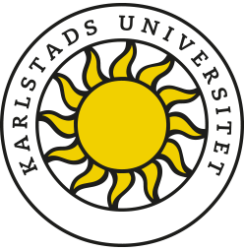Andrea Schalley, Professor i engelsk språkvetenskap
Source (open access): Chalmers, J., Eisenchlas, S. A., Munro, A., & Schalley, A. C. (2021). Sixty years of second language aptitude research: A systematic quantitative literature review. Language and Linguistics Compass, e12440. https://doi.org/10.1111/lnc3.12440
Have you sometimes wondered why you or some of your students easily take to learning a second language, while others struggle? This potential and readiness of an individual to acquire a second language is referred to as ‘second language (L2) aptitude’. Anyone who has immersed themselves more deeply into L2 learning research will have come across this concept.
Traditionally, L2 aptitude has been thought of as a stable trait – as a ‘talent’ or ‘gift’ that learners have or lack, without much room for improvement. This has led to a rather limited research interest over time, especially compared to the research available on other L2 learning predictors such as motivation (see here) for a related blog entry).
Much of the early research has focused on measuring L2 aptitude in order to determine prospective learners’ (un)suitability to L2 learning. Indeed, the objective of the first valid instrument, the Modern Language Aptitude Test (MLAT, Carroll & Sapon, 1959), “was to identify individuals worthy of government and military investment for intensive language study” (Chalmers, 2017, p. 33). Since then, L2 aptitude as a concept has been called into question, with still no clear consensus emerging – except that L2 aptitude is what L2 aptitude tests measure. Nevertheless, a number of L2 aptitude models have been suggested, such as the highly influential four-factor model outlined in Table 1.
Table 1. Carroll’s (1962, pp. 129–130) four factors of L2 aptitude (adopted from Chalmers et al., 2021)
| Factor | Description |
| Phonetic Coding | the ability to meaningfully store auditory information for access at a later time |
| Grammatical Sensitivity | the ability to “handle grammar” and discern the functions of words in various contexts |
| Rote Memory for Foreign Language Materials | the ability and capacity to memorise a number of associations from the input materials, similar but independent to phonetic coding, encompassing more than just phonetic information |
| Inductive Language Learning | the ability to infer linguistic forms, rules, and patterns from new linguistic content […] with a minimum of supervision or guidance |
As the MLAT – which is still considered the benchmark of L2 aptitude testing – was published six decades ago, we set out to revisit the literature and explore where L2 aptitude research stands today – and whether L2 aptitude continues to be viewed as an individual difference of little interest. We conducted a systematic literature review in which close to one hundred publications from those six decades (1959–2019) were included. Here is what we found:
Research on L2 aptitude is certainly not ‘dead’, as some scholars had claimed: After a long time with only sporadic publications, a renewed interest arose in the 1990s. More importantly, the last decade has seen and continues to see a spike in publications. We believe that more nuanced questions and novel methodologies might be behind this. In particular, L2 aptitude tests are not so much seen as diagnostic tools any more, but are instead predominantly used to help explain effects found in L2 learning research. A more sophisticated understanding of the concept and its multifactorial nature is evolving, with factors such as first language skills and working memory becoming more prominent. This might lead to the identification of strengths and weaknesses in individual learners, which in practical terms could allow for a more individualised approach to language instruction.
If amenable factors such as working memory turned out to be central, L2 aptitude could in fact be responsive to training, rather than being the stable gift that no-one can influence. Recent conference presentations and publications (e.g. Singleton, 2017; Wen, 2016) support this view, and we may thus be witnessing an exciting paradigm shift – one which might potentially change how we conceptualise language learning as such.
Andrea Schalley, May 2022
References
Carroll, J. B. (1962). The prediction of success in intensive foreign language training. In R. Glaser (Ed.), Training research and education (pp. 87-136). Pittsburgh: University of Pittsburgh Press.
Carroll, J. B., & Sapon, S. M. (1959). Modern language aptitude test. New York: The Psychological Corporation.
Chalmers, James (2017). How stable is second language aptitude? Effects of second language learning and language analysis training on second language aptitude test scores. PhD dissertation, Griffith University. https://doi.org/10.25904/1912/2931
Chalmers, J., Eisenchlas, S. A., Munro, A., & Schalley, A. C. (2021). Sixty years of second language aptitude research: A systematic quantitative literature review. Language and Linguistics Compass, e12440. https://doi.org/10.1111/lnc3.12440
Singleton, D. (2017). Language aptitude: Desirable trait or acquirable attribute? Studies in Second Language Learning and Teaching, 7(1), 89–103. http://dx.doi.org/10.14746/ssllt.2017.7.1.5
Wen, Z. (2016). Working memory and second language learning: Towards an integrated approach. Bristol: Multilingual Matters.

